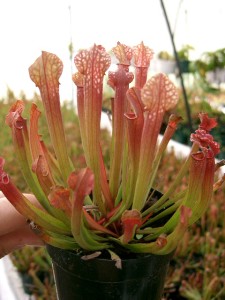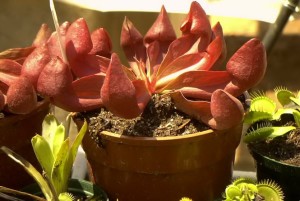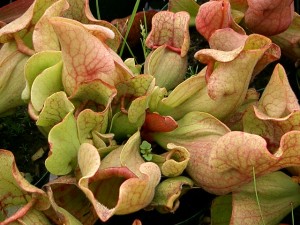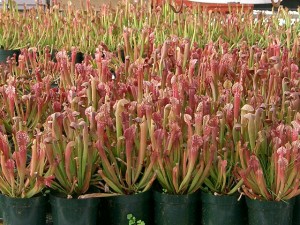The low-growing swamp Pitcher plants (Sarracenia sp.) have long, slender, hollow leaves (the “pitchers”) which grow in small rosettes around a central root. There are many varieties of pitcher plants and many kinds of traps. Some plants are tall, others are short, all have one thing in common: they trap their meals by luring insects inside and preventing their escape. However, unlike the Venus Fly Trap the Pitcher plants are passive – insects that enter end up slipping into the digestive fluid at the bottom of the pitcher and the plants feast without lifting a finger or closing a leaf!
Pitcher plants use surprising methods to lure, trap and digest insects. The inner walls of the pitchers are lined with soft, long hairs between which can be found nectar glands or honey lined leaf folds. In some, attractive red veins lead to the trap entrance and others confuse their prey with clear windows near the leaf opening. Others snare their prey with combinations of waxy lips at the edge, downward pointing needles and slippery pools of water. The water-filled “stomach” has chemicals that break the surface tension so insects sink and drown. Once the prey is dead the plant prepares to eat by pouring powerful digestive enzymes into the pool. This dissolves the soft parts of the insect in about a week, after which special cells on the inside of the leaf absorb the nutrients from the insect “soup”. All that remains is a pile of insect skeletons at the bottom. Pitcher plants are easy to grow indoors and require more or less the same conditions as the Venus Fly Trap They are also temperate plants and will enter a period of dormancy in the cold winter months.




